Class 10 Civics Chapter 2 Notes - Federalism
| Table of contents |

|
| What is Federalism? |

|
| What makes India a Federal Country? |

|
| How is Federalism Practiced? |

|
| Decentralization in India |

|
| Frequently Asked Questions (FAQs) |

|
The concept of federalism has been around for centuries, and it has been implemented in a variety of ways in different countries. In the United States, for example, the federal system was established in the late 18th century as a way to balance the power of the central government with the rights of the individual states.
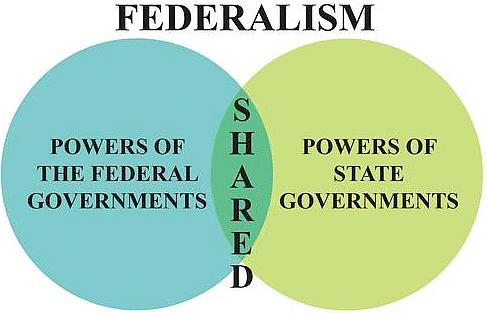 In this chapter, we will explore the concept of federalism, a system of governance that divides powers between a central authority and regional entities.
In this chapter, we will explore the concept of federalism, a system of governance that divides powers between a central authority and regional entities.
- To understand federalism, we can compare the cases of Belgium and Sri Lanka.
- Belgium's shift to a federal system in 1993 is a significant example.
- Previously, regional governments in Belgium had powers that could be revoked by the central government.
- The 1993 constitutional change granted these regional governments permanent, constitutionally protected powers, marking a transition from a unitary to a federal system.
- In contrast, Sri Lanka remains a unitary state, where the central government holds all major powers.
- There is ongoing debate, particularly among Tamil leaders, about the need for Sri Lanka to adopt a federal system to better accommodate regional demands and differences.
- This chapter will delve into the principles of federalism and how different countries implement it to address diverse regional needs and conflicts.
What is Federalism?
(i) Federalism is a political system that involves the division of power between a central government and regional or state governments.
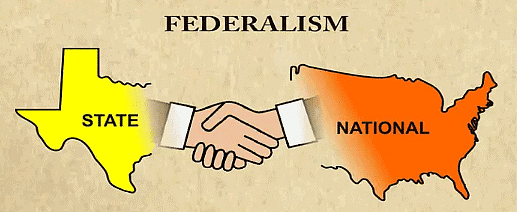 (ii) This division of power is enshrined in a country's constitution, and it typically involves the central government retaining certain powers, while other powers are reserved for the regional governments.
(ii) This division of power is enshrined in a country's constitution, and it typically involves the central government retaining certain powers, while other powers are reserved for the regional governments.
(iii) Federations are contrasted with unitary governments.
(iv) Under the unitary system, either there is only one level of government or the sub-units are subordinate to the central.
(v) In a federal system, the central government cannot order the state government to do something.
Federalism has two levels of government:
(a) One is the government for the entire country that is (Central Government) usually responsible for a new subject of common national interest.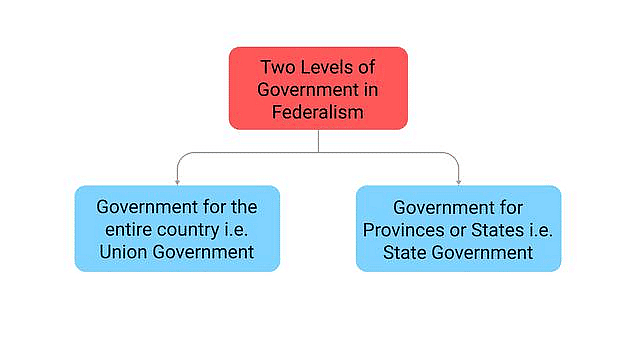
(b) The others are governments at the level of provinces or states that look after much of the day-to-day administering of their state.
Seven Key Features of Federalism
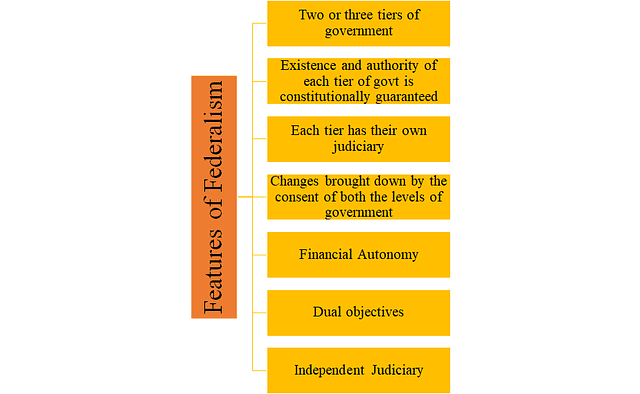
- Multiple Levels of Government: Federalism features two or more levels (or tiers) of government.
- Distinct Jurisdictions: Different levels of government govern the same citizens, with each having authority over specific areas such as legislation, taxation, and administration.
- Constitutional Authority: The constitution defines and guarantees the powers of each level of government, ensuring their existence and authority are protected.
- Amendment Process: Fundamental constitutional provisions cannot be altered by just one level of government; such changes need approval from both levels.
- Judicial Oversight: Courts interpret the constitution and resolve disputes between different government levels, with the highest court serving as an impartial adjudicator.
- Revenue Allocation: The constitution specifies the revenue sources for each level of government to maintain financial independence and autonomy.
- Unity and Diversity: Federalism aims to balance national unity with regional diversity, requiring mutual trust and agreed-upon power-sharing rules between levels of government.
There are two kinds of routes through which federations have been formed.
(a) The first route involves independent States coming together on their own to form a bigger unit so that by pooling sovereignty and retaining identity they can increase their security. This is ‘coming together’ federations.
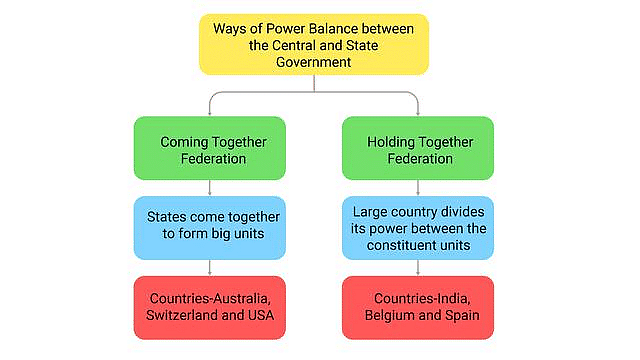
(b) The second route is where a large country decides to divide its power between the constituent States and the national government. This is ‘holding together’ federations.
What makes India a Federal Country?
(i) India is a federal country because its political system is based on the division of power between the central government and state governments.
(ii) This division of power is enshrined in the Indian Constitution, which outlines the responsibilities and powers of both levels of government.
(iii) The constitution declared India as the Union of States.
(iv) The Constitution originally provided for a two-tier system of government, the Union Government or what we call the Central Government, representing the Union of India and the State Government.
(v) Later the third tier of federalism was added in the form of Panchayats and municipalities.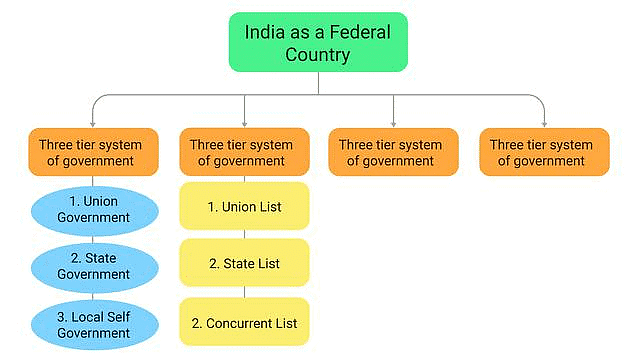
The Constitution has a three-fold distribution of legislative powers between the Union Government and the State Governments.
The Constitution contains three Lists:
(i) Union Lists:
In India, the Union List is a list of subjects that are exclusively within the jurisdiction of the central government. This means that only the Union Government, which is another term for the central government, has the authority to make laws relating to these subjects.
It includes subjects of national importance such as the defense of the country, foreign affairs, banking, communications and currency.

(ii) State Lists:
In India, the State List is a list of subjects that are exclusively within the jurisdiction of the state governments. This means that only the state governments have the authority to make laws relating to these subjects.
It contains subjects of States and local importance such as police, trade, commerce, agriculture and irrigation.
(iii) Concurrent List:
Both the Union as well as the State Governments can make laws on the subjects mentioned in this list. If their laws conflict with each other, the law made by the Union Government will prevail.
It includes subjects of common interest to both the Union Governments, such as education, forest, trade unions, marriage, adoption and succession.
- Unequal Power Distribution in Indian States:
- In federations formed by "holding together," constituent units often have unequal powers.
- In India, not all states have the same level of authority.
- Special Status for Certain States:
- Some states, such as Assam, Nagaland, Arunachal Pradesh, and Mizoram, have special powers under Article 371 of the Constitution due to unique social and historical factors.
- These powers protect indigenous land rights, culture, and offer preferential treatment in government jobs.
- Non-residents are restricted from purchasing land or property in these states.
- Union Territories and Limited Powers:
- Certain regions in India, including Chandigarh, Lakshadweep, and Delhi, are classified as Union Territories.
- These areas are too small to be independent states and therefore have limited powers, with the Central Government holding special authority over them.
- Power Sharing Between Union and State Governments:
- The sharing of power between the Union and State Governments is fundamental to the Constitution's structure.
- Altering this power-sharing arrangement is difficult and requires approval from both Houses of Parliament with a two-thirds majority, followed by ratification by at least half of the state legislatures.
- Judicial Oversight and Dispute Resolution:
- The judiciary, especially the High Courts and the Supreme Court, plays a critical role in overseeing the implementation of constitutional provisions and resolving disputes regarding the division of powers.
- Taxation and Resource Allocation:
- Both the Union and State Governments have the authority to levy taxes to fund their operations and fulfill their responsibilities.
How is Federalism Practiced?
Federalism is practiced in India through a system of shared governance, in which power is divided between the central government, state governments, and local governments.
Each level of government has its own set of responsibilities and powers, which are outlined in the Indian Constitution.
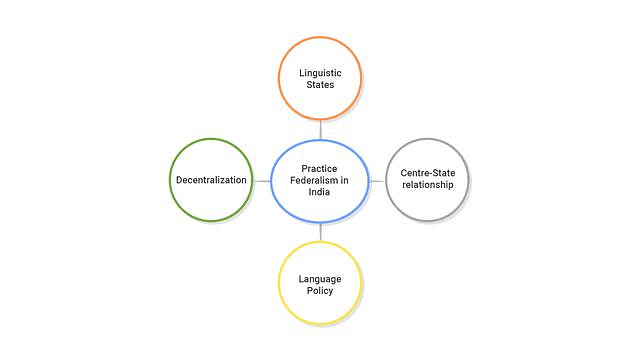
- At the national level, the central government is responsible for issues of national importance, such as defence, foreign affairs, and currency.
- At the state level, state governments are responsible for issues that are more local, such as education, healthcare, and law and order.
- At the local level, India has established a third tier of government through the creation of Panchayati Raj institutions. These local governing bodies have been granted significant powers and responsibilities by the Constitution, such as the authority to manage local public works projects, collect local taxes, and regulate local industries.
Note: In addition, both the central government and state governments have the authority to make laws related to subjects listed in the Concurrent List, which includes areas such as health, education, and social welfare.
Linguistic States
The creation of linguistic states was the first and a major test for democratic politics in our country. Many old States have vanished and many new States have been created.
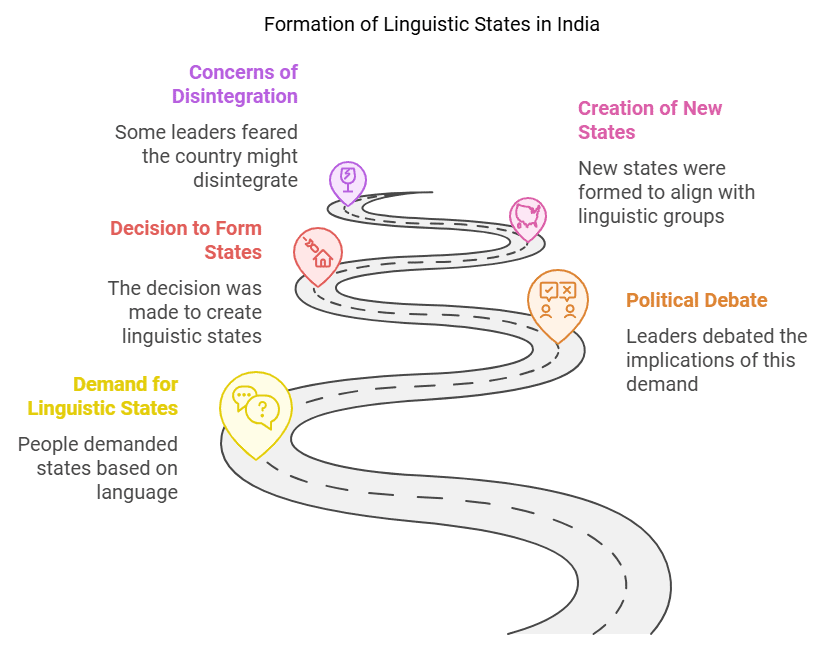
- In 1947, the boundaries of several old states of India were changed to create new States.
- This was done to ensure that people who spoke the same language lived in the same States.
- When the demand for the formation of States based on language was raised, some national leaders feared that it would lead to the disintegration of the country.
Language Policy
1. Language Policy and No National Language:
- The Indian Constitution does not designate a national language.
- Hindi is recognized as the official language, but as it is the mother tongue of only about 40% of Indians, various safeguards are in place to protect other languages.
2. Scheduled Languages and Examination Flexibility:
- In addition to Hindi, the Constitution recognizes 22 Scheduled Languages.
- Candidates appearing for Central Government exams can choose to take them in any of these languages.
- States also have their own official languages, which are used for most governmental work.
3. Cautious Spread of Hindi:
- Unlike in Sri Lanka, Indian leaders took a careful approach in promoting Hindi.
- Initially, the Constitution planned to cease the use of English for official purposes by 1965.
- However, after protests, particularly in Tamil Nadu, the Central Government agreed to continue using English alongside Hindi.
4. Criticism and Continued Promotion of Hindi:
- Critics argue that continuing the use of English benefits the English-speaking elite.
- Despite this, the Government of India continues to promote Hindi, though it does not impose it on non-Hindi-speaking states.
- The flexibility of Indian leaders in handling the language issue has helped avoid conflicts like those seen in Sri Lanka.
Centre-state Relations
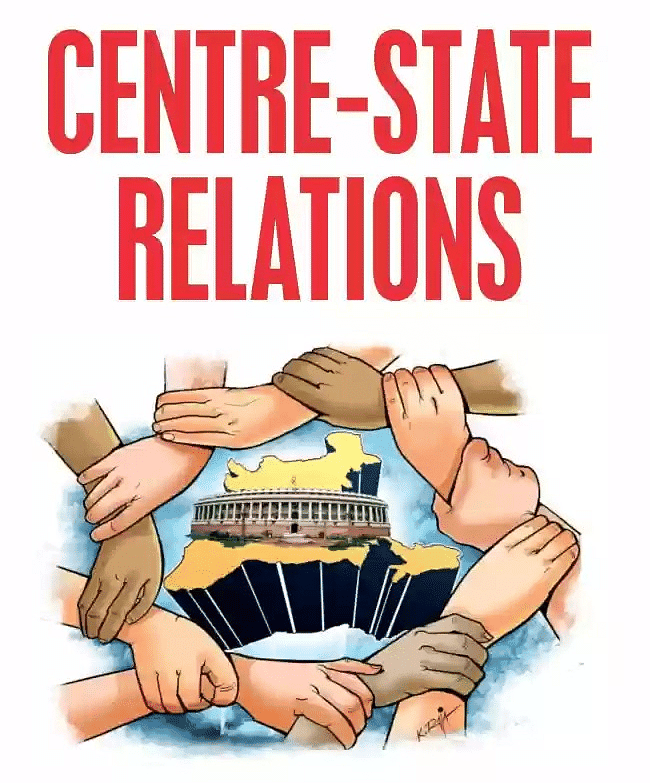
1. Strengthening Federalism Through Centre-State Relations:
- Restructuring Centre-State relations has played a significant role in strengthening federalism in India.
- The effectiveness of constitutional power-sharing largely depends on how ruling parties and leaders adhere to these arrangements.
2. Dominance of a Single Party:
- For a long time, the same party governed both the Centre and most States, leading to State Governments not fully exercising their autonomy as federal units.
- When different parties governed the Centre and the States, the Central Government often attempted to undermine State powers, weakening the federal spirit.
3. Misuse of Constitutional Powers:
- In the past, the Central Government frequently misused its constitutional authority to dismiss State Governments led by rival parties, which eroded the essence of federalism.
4. Rise of Regional Parties and Coalition Governments:
- This dynamic changed significantly after 1990, with the rise of regional political parties in many States.
- This era also marked the beginning of coalition governments at the Centre, where major national parties had to ally with regional parties to form a government due to the lack of a clear majority in the Lok Sabha.
Decentralization in India
Need for a Third Tier: India's vast size and diversity require more than just two levels of government. A third tier, local government, was created for more effective power sharing.
Concept of Decentralization: Decentralization involves transferring power from Central and State governments to local governments, enabling local problem-solving and encouraging democratic participation.
Initial Challenges: Early attempts at decentralization were limited. Local governments lacked power, resources, and regular elections.
1992 Constitutional Amendment:
A significant step towards effective decentralization was taken with the 1992 amendment, which empowered local governments.
- Key Features of the Amendment:
- Mandatory regular elections for local bodies.
- Reservation of seats for Scheduled Castes, Scheduled Tribes, Other Backward Classes, and women.
- Creation of State Election Commissions for local elections.
- Requirement for State governments to share powers and revenue with local bodies.
- Structure of Rural Local Government Known as Panchayati Raj, it includes: Gram Panchayat: Decision-making body for villages, supervised by the Gram Sabha. Panchayat Samiti: Grouping of several Gram Panchayats at the block level. Zilla Parishad: District-level body with elected members and the Zilla Parishad chairperson as the political head.
Urban Local Government:
Municipalities for towns and municipal corporations for big cities, both controlled by elected representatives.
The political head is the municipal chairperson or mayor.
Frequently Asked Questions (FAQs)
Q1. What is Federalism?
Ans. Federalism is a form of government where power is divided between a central government and various constituent units of the country. The constituent units can be states, provinces, or regions, each with their own government, while the central government retains overall control. This division of power is enshrined in the country's constitution and is designed to ensure that each level of government has its own defined responsibilities and powers.
Q2. What is the importance of Federalism?
Ans. Federalism is important as it provides a balance of power between the central government and the constituent units. It allows for greater autonomy and flexibility, as the constituent units can make decisions that are specific to their needs and circumstances. At the same time, the central government can provide support and resources to the constituent units when needed. Federalism also promotes diversity and pluralism by allowing for regional differences to be recognized and respected. It can also help to ensure that the rights and interests of minorities are protected.
Q3. How is federalism different from a unitary system of government?
Ans. In a unitary system of government, power is concentrated in a single central government, and local governments have little or no autonomy. In contrast, federalism distributes power between a central government and constituent political units, providing a degree of autonomy to local governments.
Q4. How does federalism impact policymaking?
Ans. Federalism can make policymaking more complex, as different levels of government may have different priorities and agendas. It can also result in a patchwork of policies across different regions, which can make it difficult to implement consistent national policies. However, federalism can also provide opportunities for experimentation and innovation in policymaking, as different regions can try out different approaches and policies.
Q5. What are the challenges of Federalism?
Ans. Federalism can also have its challenges. It can lead to a lack of consistency in laws and regulations across the country, which can cause confusion and disparities. It can also lead to a lack of coordination and cooperation between the central government and the constituent units, which can result in inefficiencies and duplication of efforts. Federalism can also create tensions between the central government and the constituent units, particularly if there are disagreements over the division of powers or the allocation of resources. Finally, Federalism can lead to a lack of accountability, as it can be difficult to determine who is responsible for certain decisions or outcomes.
|
63 videos|445 docs|87 tests
|
FAQs on Class 10 Civics Chapter 2 Notes - Federalism
| 1. What is the definition of Federalism? |  |
| 2. How is India structured as a federal country? |  |
| 3. What are the key features of federalism practiced in India? |  |
| 4. What is the significance of decentralization in India? |  |
| 5. How does federalism support unity in diversity in India? |  |

|
Explore Courses for Class 10 exam
|

|


















